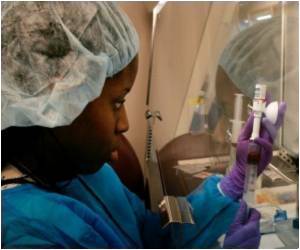An entirely new class of antiangiogenesis drugs have been discovered by researchers at Massachusetts General Hospital (MGH) in a compound found in a South American tree.

"Most of the FDA-approved antiangiogenesis drugs inhibit the pathway controlled by vascular endothelial growth factor or VEGF, which directly stimulates blood vessel development," said Igor Garkavtsev, MD, PhD, of the Steele Laboratory for Tumor Biology at MGH and lead author of the study.
Garkavtsev and his colleagues first showed that DAL administration interfered with blood vessel formation in zebrafish, both during embryonic development and wound healing.
They then found that it reduced the vascular density of tumors implanted in mice and, with daily treatment, significantly reduced tumor growth with no signs of toxicity.
Experiments with endothelial cells from human umbilical veins revealed that DAL administration altered the size and shape of the cells by changing the organization of the actin cytoskeleton; blocked formation of new vascular networks and reorganized existing networks; and interfered with the movement of cells required for wound healing.
Further investigation found that DAL produces these effects by decreasing the activity of Rac1, a protein known to be important to cellular adhesion and cytoskeletal organization.
Advertisement
Source-ANI


![Prostate Specific Antigen [PSA] & Prostate Cancer Diagnosis Prostate Specific Antigen [PSA] & Prostate Cancer Diagnosis](https://images.medindia.net/patientinfo/120_100/prostate-specific-antigen.jpg)











